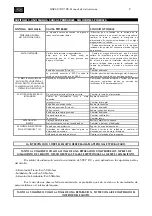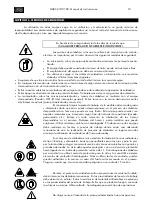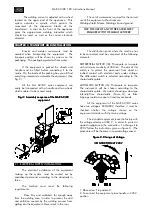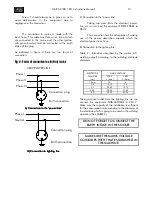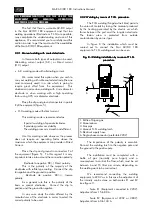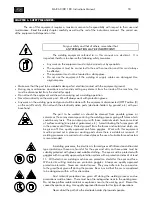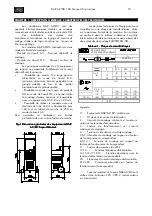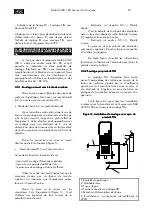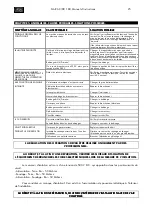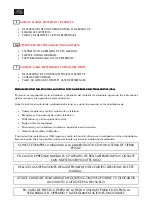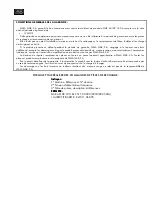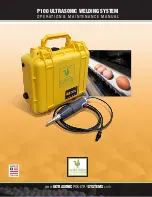
GAR AC/DC 180. Instructions Manual.
15
3.3. RECOMMENDATIONS FOR THE USE OF THE
EQUIPMENT AND WELDING OPERATION.
ELECTRODE AND TIG PROCESS
The fact that there is a double AC-DC output
in the Gar AC/DC 180 equipment and that two
welding operations (Electrode or T.I.G) are possible,
may complicate the understanding and use of this
appliance. We recommend you to carefully read this
section in order to get the most out of the psosibilities
of the Gar AC/DC 180 equipment.
3.3.1. Manual welding with coated electrode.
3.3.1. Manual welding with coated electrode.
3.3.1. Manual welding with coated electrode.
3.3.1. Manual welding with coated electrode.
In this case both types of outputs can be used;
Alternating current output (A.C.) or Direct current
(D.C.) output.
•
A.C working mode with alternating current.
We recommend this option when you wish to
carry out welding with rutile coated electrode (the one
most commonly used) in a job which is going to
require great effort from the equipment. This
situation can arise when welding with 4 mm diameter
electrode or when working with a high operating
factor using 3.25 mm diameter electrode.
Place the clip and ground connectors in points
E of the equipment (figure 5).
•
D.C working mode with direct current.
This working mode is recommended as:
- It permits welding of special electrodes.
- It provides greater arc stability.
- The welding process is smooth and efficient.
Use this working mode whenever the process
does not require an operating factor above the
maximum which the equipment can provide in Direct
Current.
Place the clip and ground in connectors F of
the equipment (figure 5). To this regard it is very
important to take into account the connection polarity:
- Electrode to negative. DC(-). Direct polarity.
This is the polarity of the majority of the
electrodes with rutlile type coating. Connect the clip
to negative and the ground to positive.
- Electrode de positive. DC(+). Inverse
polarity.
As a general rule this is the polarity of the
basic or special electrodes. Connect the clip to
positive and the ground to negative.
In any case study the data offered by the
manufacturer of the electrode in order to select the
correct polarity to be used.
3.3.2 Welding by means of T.I.G. procedure
3.3.2 Welding by means of T.I.G. procedure
3.3.2 Welding by means of T.I.G. procedure
3.3.2 Welding by means of T.I.G. procedure
The T.I.G welding (Tungsten-Inert Gas) permits
the union of metals by fusing the material produced
by the heating generated by the electric arc which
forms between the part and the tungsten electrode.
The fusion area is protected from outside
contamination by an inert gas.
In figure 8 the installation which must be
carried out to connect the Gar AC/DC 180
equipment in T.I.G. welding work can be seen.
Fig. 8 - Welding installation by means of T.I.G.
Fig. 8 - Welding installation by means of T.I.G.
Fig. 8 - Welding installation by means of T.I.G.
Fig. 8 - Welding installation by means of T.I.G.
procedure
procedure
procedure
procedure
5
1
4
2
3
6
1. Bottle of Argon gas
2. Manoreducer
3. Gas pipe
4. Manual T.I.G. welding torch
5. Electrical supply hose
6. Single-phase connector (preferible 220V)
The importance of the polarity is essential.
Connect the welding torch to the negative pole and
the ground to the positive pole.
The installation must be completed with a
bottle of gas (normally pure Argon) and a
manoreducer to control the flow, which must be set
between 6 and 10 litres per minute, depending on
the welding work to be carried out.
We recommend connecting the welding
equipment to 220 V as in this case the adjustment of
the intensity can be done on both scales E1 and E2
(see figure 7)
- Scale E1 (Equipment connected to 220V):
Adjustment from 15 to 80 A.
- Scale E2 (Equipment at 220V or 380V):
Adjustment from 60 to 140 A.









